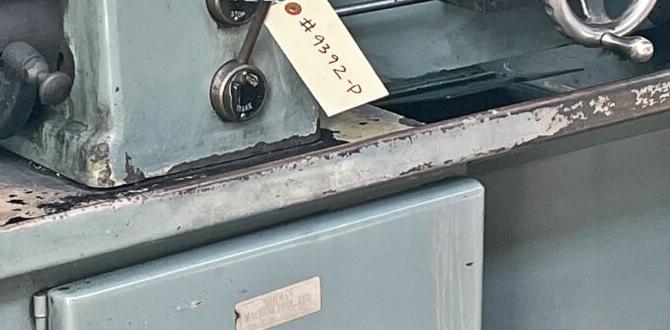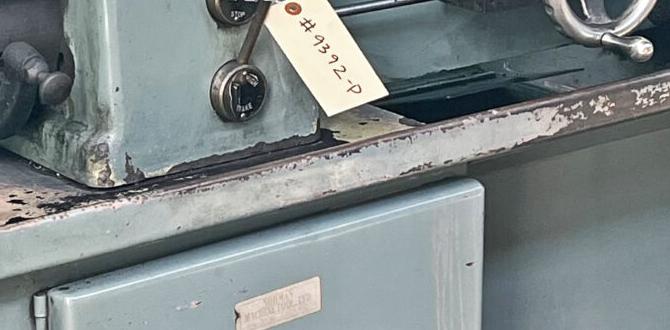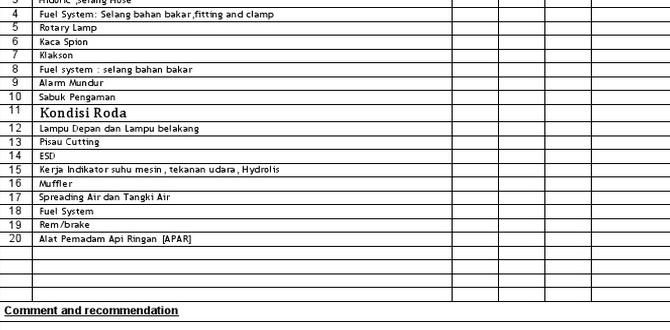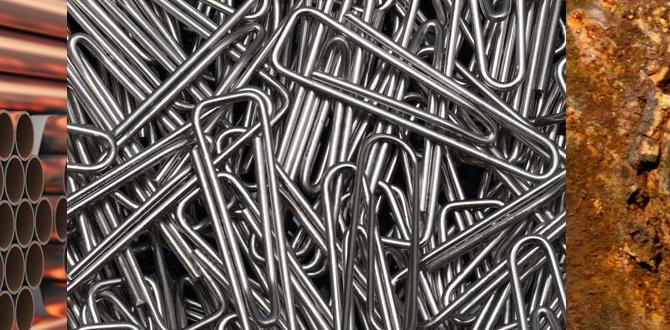Have you ever watched a piece of wood spin on a lathe? It’s like magic! With the right lathe turning tools, beginners can create amazing projects. Imagine making beautiful bowls, elegant furniture, or even fun toys. The lathe is a fantastic tool for anyone who loves to work with their hands.
But starting can feel a bit overwhelming. There are so many tools to choose from! Which ones do you really need? Don’t worry! This article will guide you through the essential lathe turning tools for beginners. You’ll learn what each tool does and how to use them. Get ready to explore new possibilities and unleash your creativity!
Essential Lathe Turning Tools For Beginners: A Comprehensive Guide
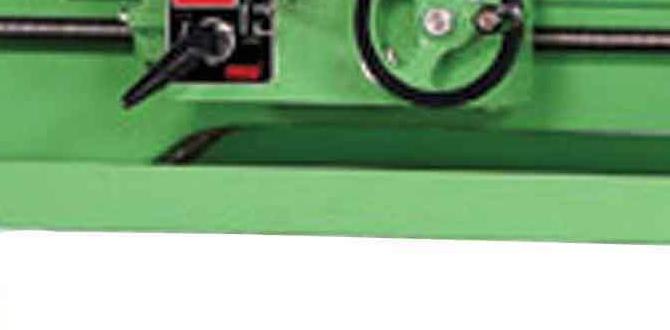
Lathe Turning Tools for Beginners
Using lathe turning tools can seem tricky at first. These tools help shape wood or metal into beautiful items, like bowls or furniture legs. Beginners will learn about essential tools such as chisels, gouges, and scrapers. Each tool has a special purpose that makes turning easier and more fun. Did you know that even small changes in your technique can lead to impressive results? With practice and the right tools, anyone can become a skilled woodturner!Understanding Lathe Turning Tools
Definition and purpose of lathe turning tools. Different types of lathe tools and their applications.Lathe turning tools are like magic wands for shaping wood and metal. They help you create everything from toys to furniture. There are many types of lathe tools, each with its own job. For example, roughing gouges remove a lot of material quickly, while spindle gouges are perfect for fine details. Here’s a quick table to show the different tools and what they do:
| Type of Tool | Application |
|---|---|
| Roughing Gouge | Quickly shapes turning stock |
| Spindle Gouge | Handles fine details |
| Parting Tool | Cuts deep grooves |
| Skew Chisel | Creates smooth finishes |
Knowing the right tool makes all the difference. Consider it like choosing the right crayon for coloring inside the lines!
Choosing the Right Lathe for Beginners
Key features to look for in a beginner’s lathe. Recommendations for budgetfriendly options.Finding the right lathe for you is exciting! Look for these key features:
- Size: A smaller lathe is easy to handle.
- Speed Settings: Different speeds help with various projects.
- Power: A motor with good torque is necessary.
Some budget-friendly options for beginners include:
- WEN 3420: Affordable and good for learning.
- Grizzly G0800: Solid choice without breaking the bank.
Choose wisely to enjoy turning with ease!
What should beginners consider when buying a lathe?
Beginners should focus on ease of use, safety, and flexibility. Features like adjustable speeds and compact size make a lathe user-friendly. Researching and reading reviews will help you pick the right one.
Safety Tips for Using Lathe Turning Tools
Essential safety gear and best practices. Common mistakes to avoid while operating a lathe.Safety is key when working with lathe turning tools. Always wear safety glasses to protect your eyes and ear protection from noisy machines. Use gloves for grip but take them off for small parts. Avoid loose clothes that could get caught in the lathe.
Common mistakes include:
- Ignoring tool sharpness, which can cause accidents.
- Not securing the workpiece, leading to spinning parts.
- Rushing the work, which can lead to mistakes.
Follow these tips to stay safe and enjoy working with your lathe turning tools!
What are essential safety practices for beginners?
Always read the manual and ask for help if unsure. Take your time and stay focused. Each step counts!Maintenance and Care of Lathe Turning Tools
Importance of tool maintenance for longevity. Best practices for cleaning and sharpening tools.Keeping your lathe turning tools in tip-top shape is key to making them last. Like kids need bedtime, tools need care! Regular cleaning removes gunk that slows them down. Try using a soft brush or cloth—no need for a panic cleaning session. For sharpening, using a good whetstone or sharpening jig can work wonders. Here’s a quick guide:
| Task | Best Practice |
|---|---|
| Cleaning | Use a soft brush or cloth |
| Sharpening | Utilize a whetstone or sharpening jig |
Remember, a happy tool means happy projects! So, treat them well, and they’ll treat you well back.
Frequently Asked Questions about Lathe Turning Tools
Common queries and concerns faced by beginners. Expert tips and insights on advanced questions.Many beginners have questions about lathe turning tools. It’s normal to feel confused! Here are some common concerns:
What should I start with?
Choose basic tools like parting tools and gouges to get started. They are easy to use and great for beginners.
How do I care for my tools?
Always clean your tools after use. Sharpen them regularly to keep them in good shape.
What if my lathe is noisy?
Check for loose parts. Tighten them up if needed. Sometimes oiling moving parts helps too!
For better results, find online tutorials. Expert advice can help too!
Resources for Further Learning
Recommended books, websites, and video tutorials. Local classes or workshops for handson experience.Learning about lathe turning tools can be fun! Want to dive deeper? Check out some great books and websites. YouTube also has amazing video tutorials that can show you all the tricks without the need for a magician. If you prefer hands-on experience, look for local workshops. Nothing beats turning wood while chatting with fellow newbies. Remember, learning doesn’t have to feel like homework!
| Type | Resource |
|---|---|
| Book | Turning Wood: A Beginner’s Guide |
| Website | Woodworking for Beginners |
| Video | YouTube Lathe Techniques |
| Workshop | Local Community College |
Conclusion
In summary, lathe turning tools are essential for beginners who want to shape wood or metal. You should start with basic tools like gouges and chisels. Practice is key to improving your skills. Remember to focus on safety while you work. For more tips, check out beginner guides or videos online. Let’s get started on your turning journey!FAQs
What Are The Essential Lathe Turning Tools A Beginner Should Start With?As a beginner, you should start with a few essential lathe turning tools. First, get a roughing tool to shape your wood quickly. Next, a parting tool helps you cut or separate pieces. You’ll also need a spindle gouge for detailed designs. Finally, a bowl gouge is great for shaping bowls. These tools will help you learn and have fun!
How Do You Properly Set Up And Use A Lathe Turning Tool For The First Time?To set up a lathe turning tool, first, make sure the lathe is off. Then, adjust the tool holder to the correct height. You want the cutting edge of the tool to be level with the center of the workpiece. Next, tighten the tool securely so it doesn’t move. Finally, turn on the lathe and watch the tool as it cuts the material. Always wear safety goggles!
What Materials Are Best Suited For Lathe Turning Projects For Beginners?For lathe turning projects, soft woods like pine and cedar are great for beginners. They are easy to carve and shape. You can also use some plastics, like acrylic, which are fun to work with. These materials let you practice without too much trouble. As you get better, you can try harder woods and metals!
What Are The Key Safety Precautions To Take While Using Lathe Turning Tools?When using lathe turning tools, always wear safety goggles to protect your eyes. Keep your hair tied back and wear snug clothes to avoid getting caught in the machine. Keep your hands away from the spinning part and watch where you place them. Make sure the lathe is turned off before changing any tools. Finally, always pay attention and stay focused while you work.
How Can Beginners Maintain And Sharpen Their Lathe Turning Tools To Ensure Optimal Performance?To keep your lathe tools working well, you should sharpen them regularly. Use a sharpening stone or a file to make the edges smooth. Always check your tools for chips or dull spots before starting. When you’re finished using them, clean and store them safely. This way, your tools will last longer and work better!

